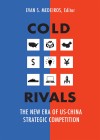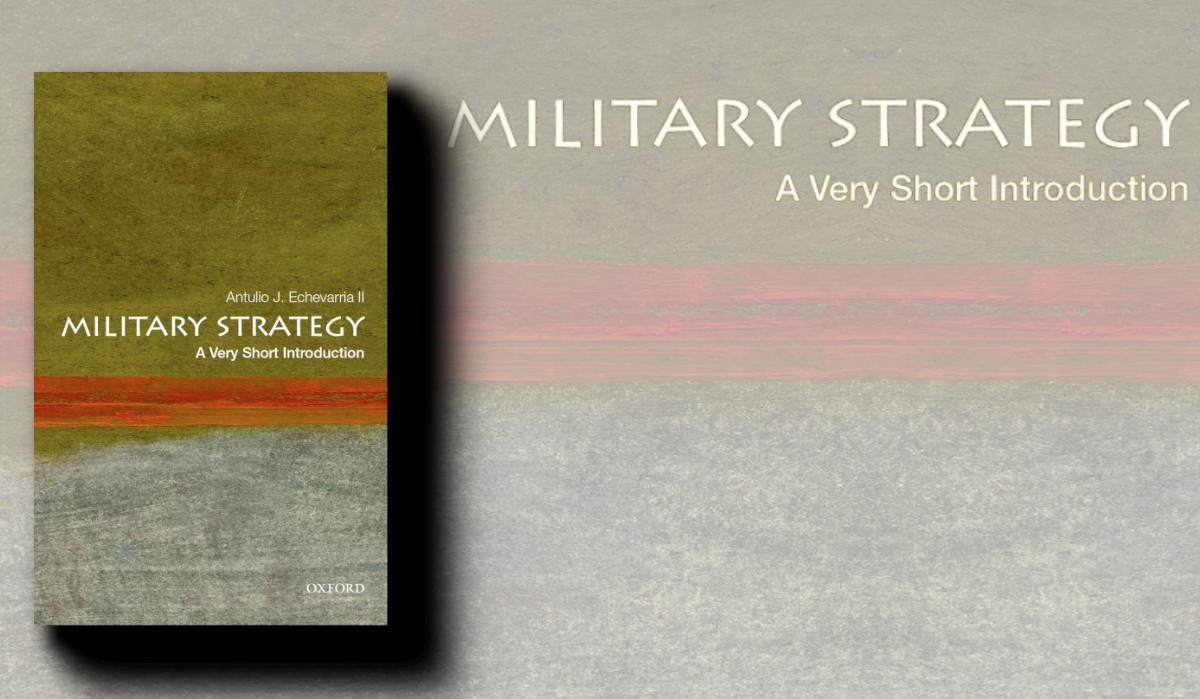The New Era of US-China Strategic Competition
Cambridge Georgetown University Press, 2023, 320 pp
Hardcover ISBN: 9781647123581
Edited By: Evan S Medeiros
Reviewed By: Jade Guan
As strategic competition becomes the defining feature of US-China relations, policymakers, analysts, and national security professionals are grappling with its meaning, implications, and trajectory. In this context, Cold Rivals: The New Era of US-China Strategic Competition, edited by Evan S. Medeiros, a top-notch expert on US-China relations, is a timely and valuable guide. Drawing together leading specialists from the United States (US) and China, the volume offers a comprehensive assessment of the origins, dynamics and possible futures of what has become the world’s most consequential bilateral relationship.
Structured in five parts, the book opens with conceptual and historical grounding. Evan Medeiros’s introductory and first chapter make perhaps the most original contribution to the volume by offering a clear framework for understanding what constitutes “competition” in international relations. Medeiros defines competition as evolving perceived contention, a contest for relative advantage, and scarcity of desired outcomes. This framing helps distinguish competition from mere disagreement or open conflict, allowing readers to better evaluate whether, how, and why particular actions or dynamics matter in a competitive context.
This analytical clarity is important. While the rhetoric of strategic competition now dominates discourse in Washington and Beijing, there is often little agreement on what competition entails and what behaviours it justifies. Medeiros argues that competition is not a euphemism for conflict, nor an inevitable precursor to it. Rather, it is a condition shaped by perception, intent, and relative advantage. This conceptual work is particularly useful for national security practitioners navigating policy debates where language can be obscure and escalatory.
The early chapters also challenge assumptions about the inevitability of the present rivalry. Richard Betts compares current US-China strategic competition to the Cold War, suggesting similarities in structure and stakes, albeit with different mixes of military, economic, and ideological drivers. Harry Harding and Wang Jisi respectively trace American and Chinese views across the past four decades, showing how strategic competition emerged less from singular events than from the slow erosion of a shared basis for cooperation. Their chapters emphasise the contingent nature of competition and caution against teleological readings of rivalry as destiny.
The middle sections of the volume examine how competition is unfolding across political, economic, military and technological domains. Elizabeth Economy and Arthur Kroeber both chart the gradual breakdown of the engagement consensus in the US. Economy highlights how China’s internal tightening and assertive diplomacy under Xi Jinping reshaped American perceptions and narrowed the space for cooperative engagement. Kroeber complements this by tracing the growing disillusionment among US policymakers and business elites with China’s sustained state-led development model and technological ambitions. He, however, cautions against simplistic notions of decoupling, pointing to deep economic entanglements that continue to shape the bilateral relationship.
In contrast to American interpretations of China’s assertiveness, Chinese contributors such as Wu Xinbo and Li Chen portray China’s actions as defensive responses to long-standing American pressure. Wu argues that Beijing seeks to manage rather than escalate competition, but sees growing US hostility as forcing China’s hand. Li explores how Chinese military thinking is shaped by historical trauma and threat perceptions, particularly in relation to Taiwan and maritime disputes. These perspectives, while more circumspect, provide important insights into how China frames its own strategy.
The chapters on military and defence competition by Phillip Saunders and Li Chen, and on non-traditional security threats by James Mulvenon, are especially relevant for national security professionals. Both Saunders and Li agree that the two sides have increasingly shaped their military modernisation programs around countering each other, particularly in the Taiwan Strait and the western Pacific. Hence, US-China military competition can be characterised as a classic security dilemma, with each side harbouring the desire to use military power to protect their interests in Asia. Mulvenon’s analysis of Chinese cyber and espionage activities and the corresponding US policy responses reveals action-reaction cycle between the two sides, highlighting how deep mutual suspicion is eroding trust and accelerating tensions in US-China relations.
The fourth part, focused on technology, is particularly timely given current debates on semiconductors, AI, and digital sovereignty. Paul Triolo and Helen Toner show how US and Chinese strategies have evolved to reflect growing fears about economic dependence and tech-enabled coercion. Triolo details Beijing’s push for self-reliance and indigenous innovation, while Toner critiques Washington’s overreliance on export controls and underinvestment in strategic capacity. Both chapters underscore that technological decoupling is neither clean nor easily controlled, and may create more risk than resilience in some domains.
The final section explores future scenarios. David Edelstein introduces the idea of time horizons – the timeframes within which states assess threats and opportunities – to explain how rising and declining powers calculate risk differently. Edelstein sees the greatest risk in both powers operating on short time horizons, where near-term costs and benefits outweigh long-term thinking. David Shambaugh offers a sobering view that US-China ties are heading toward an era of “indefinite comprehensive competitive rivalry.”[1] Both authors emphasise the importance of guardrails, buffers and crisis-management tools to keep competition from spiralling into conflict. Shambaugh’s call for “competitive coexistence” as a pragmatic alternative to confrontation stands out as both realistic and urgent.[2]
As a resource, Cold Rivals offers students of US-China relations and national security practitioners several valuable takeaways. First, it reinforces that competition is not monolithic; it plays out differently across sectors and evolves over time. Second, it reminds readers that rivalry is not inevitable. Agency, policy choice, and political will still matter. Third, the volume stresses the role of perception – how each side interprets the other’s actions and intentions is just as important as those actions themselves.
Still, the volume is not without limitations. Despite including Chinese contributors, it is weighted toward American strategic thinking. While the insights from scholars within these two countries are invaluable for understanding the drivers and dynamics of the competition, readers should be mindful of potential limitations in capturing the perspectives of the wider international community. The US-China competition has far-reaching global implications, affecting the interests and strategies of nations across different regions. Actively seeking out and considering these third-party viewpoints is essential for a more holistic understanding of the global impact of this rivalry.
Similarly, the roles of multilateral institutions, non-state actors, and private sector dynamics receive minimal treatment. These gaps are understandable given the book’s compressed format, but they point to rich terrain for a future volume that could further deepen our understanding of the rivalry’s foundations and broader consequences.
Nonetheless, Cold Rivals is a strong and accessible contribution to the growing literature on US-China relations. It does not predict a singular future but provides a toolkit to assess plausible ones. For scholars, policy practitioners, and anyone seeking a deeper understanding of this defining geopolitical challenge, this volume helps shift the focus from whether competition exists to how it operates, what it affects, and where it might be headed. In an era where strategic competition risks becoming a catch-all phrase, Medeiros and his contributors offer a welcome dose of conceptual precision and analytical depth.
About the Reviewer
Dr Jade Guan is Senior Lecturer in International Politics and Strategy at Centre of Future Defence and National Security of Deakin University. Her teaching and research focus on geopolitics in the Indo-Pacific, linkages between China’s foreign policy and domestic politics, and Chinese strategic thinking on critical regional security and strategic issues.
Endnotes
[1] David Shambaugh, “Parsing and Managing US-China Competition,” in Evan S. Medeiros (ed.), Cold Rivals: The New Era of US-China Strategic Competition, Georgetown University Press, 2023, p. 360.
[2] Ibid, p. 361.



